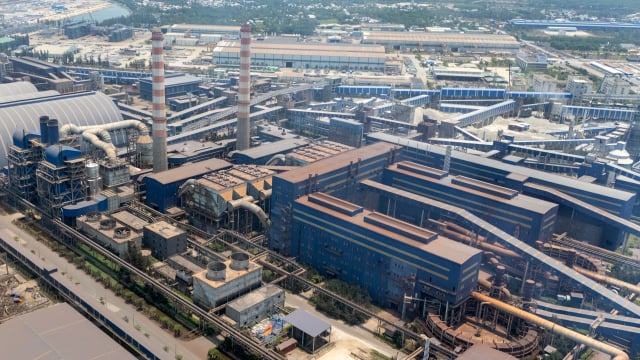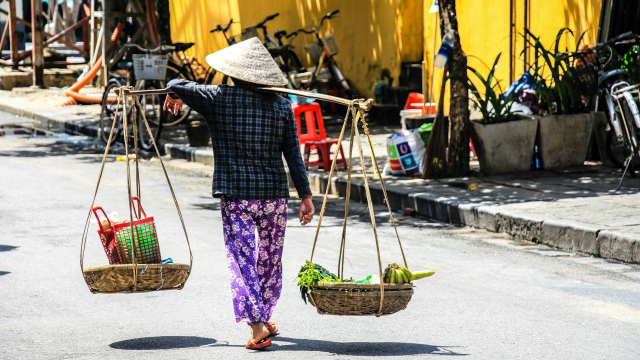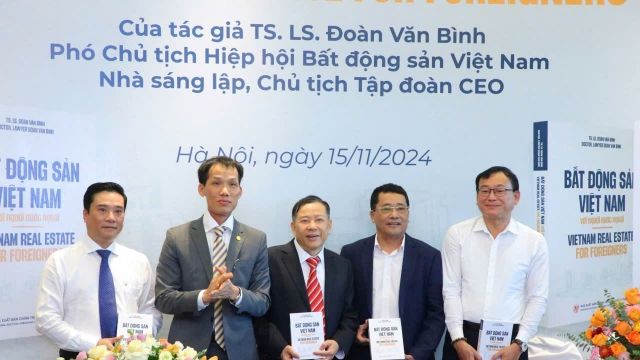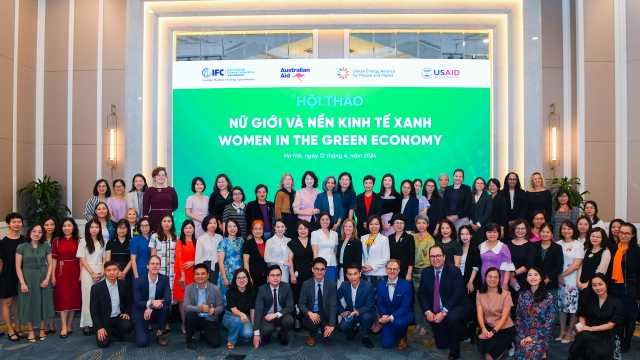National Focus
Manufacturing returns to growth as Covid abates
Renewed expansions were seen for output, new orders and purchasing activity, while business confidence jumped higher, according to the latest manufacturing purchasing managers' index (PMI) survey.
Andrew Harker, economics director at IHS Markit, said that the improving pandemic situation and subsequent loosening restrictions helped Vietnamese manufacturers get back to business in October.
As well as being able to ramp up production, firms were also much more confident in the outlook than they have been in recent months.
He noted that there are still some lingering issues caused by the recent pandemic outbreak which could stifle growth. Firstly, the problems with transportation and supply chains haven't gone away, making the sourcing and distribution of products challenging.
Secondly, a number of firms are still waiting for workers to return from their hometowns where they went during the latest Covid-19 wave, meaning labour shortages were experienced in October.
“Hopefully these challenges will start to ease as the sector continues to return to normal over the months to come,” said he.
In October, Vietnam’s PMI posted back above the 50 no-change mark at 52.1, following a reading of 40.2 in September. This signaled a renewed improvement in business conditions across the sector, thereby ending a four-month sequence of decline.
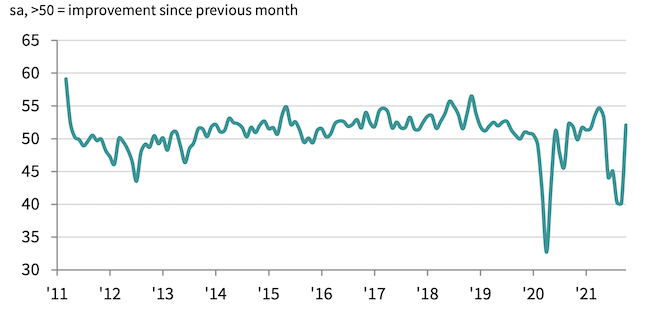
A loosening of Covid-19 restrictions led a number of firms to restart production in October, while others expanded output in response to higher new orders. As a result, production growth was recorded for the first time in five months.
A solid return to growth of new orders was also registered as manufacturers and their customers alike resumed operations. The improvement in the pandemic situation enabled firms to take advantage of increased demand in international markets, posting a first rise in new export orders since May.
Business confidence improved markedly in October as the latest wave of the Covid-19 pandemic showed signs of easing. Hopes that the pandemic will remain under control helped optimism reach a 29-month high.
Issues around staffing levels remained despite the wider return to growth, Nikkei revealed. Employment continued to fall markedly in October, with a number of firms indicating that some of their staff members had returned to their hometowns during the latest wave of the pandemic and had yet to come back to their place of work.
Shortages of labour contributed to another rise in backlogs of work, with higher new orders also adding to capacity pressures. That said, the rate of accumulation softened from September's survey record.
Input costs increased at the fastest pace since April 2011 and at one of the sharpest rates in the survey's history. Higher freight charges were widely reported, adding to the inflationary pressures caused by raw material shortages.
In response to increasing input costs, manufacturers raised their own selling prices at a marked pace that was the fastest in five months.
Efforts to guard against likely future price rises encouraged firms to expand their input inventories for the third month running in October. This was facilitated by a strong return to growth of purchasing activity, which increased at a near-record pace.
Finally, stocks of finished goods decreased marginally in October. Some firms saw inventories decline as finished products were used to help meet sales, while others noted that renewed production growth helped them to stabilize stocks.
Vietnam rises to be a new manufacturing star as US-China trade war escalates
Resolution 68: A turning point in Vietnam's private sector policy
As Vietnam sets its sights on becoming a high-income country by 2045, Resolution 68 lays a crucial foundation. But turning vision into reality requires not only good policy - but also unwavering execution, mutual trust and national unity.
Vietnam plans upgrade of Gia Binh airport to dual-use international hub
Vietnam plans to upgrade Gia Binh Airport in Bac Ninh province into a dual-use international airport to support both military and civilian operations, the government said on Friday.
Lives under the scorching sun: Outdoor workers racing against climate change
Under unforgiving conditions, the outdoor workers - the backbone of urban economies - endure the harshest impacts of climate change while remaining overlooked by social safety nets. Their resilience and struggles highlight the urgent need for better protection in the face of rising temperatures and precarious livelihoods.
CEO Group chairman unveils guide to Vietnam real estate for foreigners
Doan Van Binh, Chairman of CEO Group and Vice President of the Vietnam National Real Estate Association, introduced his latest book, “Vietnam Real Estate for Foreigners,” at a launch event in Hanoi on Friday.
Women leading the charge in Vietnam's green transition
Acting for increased women’s participation and leadership in climate action, Vietnam can accelerate a transition that is more inclusive, just, and impactful.
Steam for girls: A journey of passionate and creative girls
The "Steam for girls 2024" competition provides a creative platform for Steam and an opportunity for students to connect with peers from various regions within Vietnam and internationally.


















